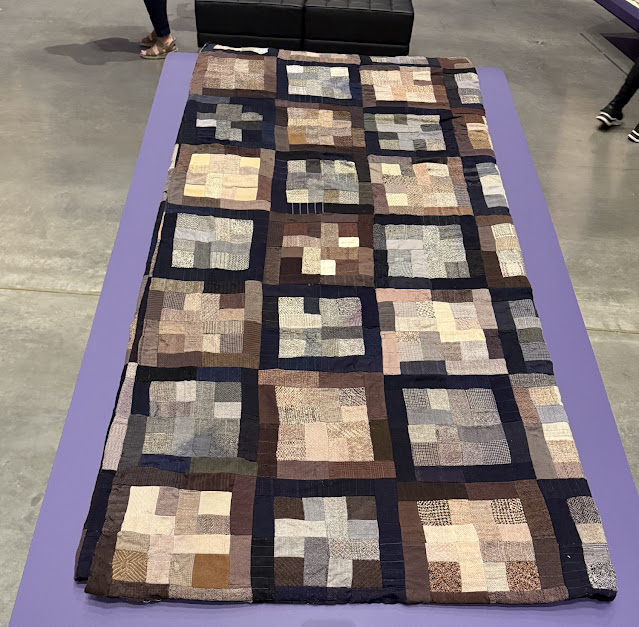A recent visit to the Berkeley Art Museum to see the exhibit Routed West: Twentieth-Century African American Quilts in California included more than one quilt that grabbed my attention, but one in particular that quickly sparked one of my own. The artist and maker are not known, although the era was the 1930s, and it is identified as being made of wool, not quilted, and a variation on the Four Patch Log Cabin. The wall text reads that it was "found in the home of a Black family residing at 854 Fell Street, near Fillmore Street, in San Francisco," and "the variety of woolen fabrics…suggests that the maker used swatches of material from a suit sample book."
I've been in a black and brown and tan and gold mood, and I knew I had scraps of Japanese yarn-dyed cotton as well as some black and gold hand-dyed velvet that I could use. I had also recently stained and painted on some white cotton with black ink, pieces that were not progressing, so they were added to the mix. But first I had to examine the Log Cabin pattern and figure out how it was put together. I could find nothing like it online, so I worked from a photo I had taken at the museum (photos at the end).
Nearly all the quilts in the show were hand-quilted with thin thread, but the sewing patterns remained elusive, so I turned to my sashiko pattern book [Amazon link] The Ultimate Sashiko Sourcebook by Susan Briscoe. The quilt was already so busy; I didn't want to add a new element like circles or arcs. From the patterns I settled on a variation of Concentric Squares, which echoed the piecing. East meets West. The sun rises and sets.
Another ninepatch, of sorts. To make up the square, I needed 36 of each shape, an auspicious number, double chai (life).
The sun comes up every morning, but the day changes.
Routed West: Twentieth-Century African American Quilts in California is at the Berkeley Art Museum until November 30, 2025.








Comments